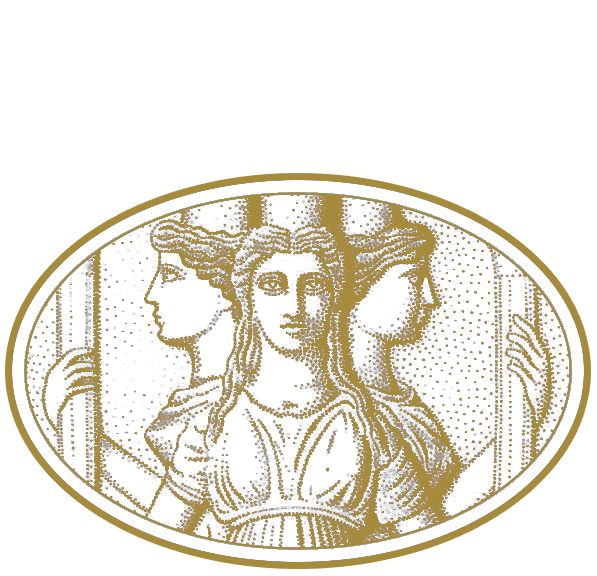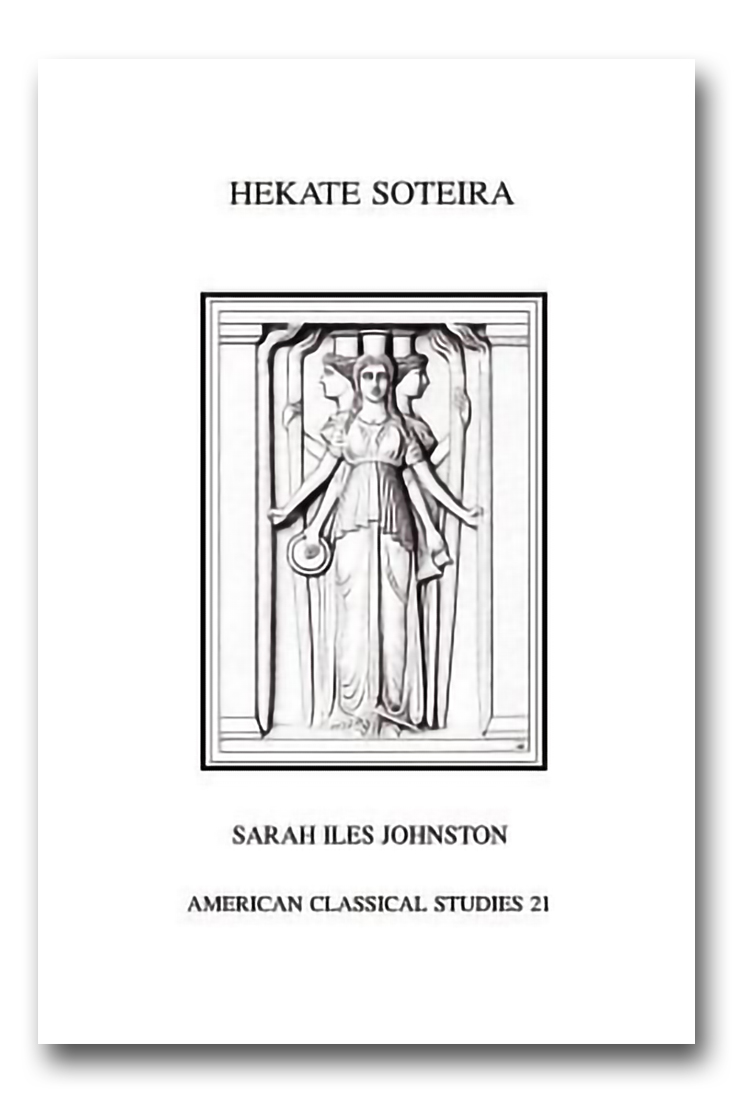Previous Books
The Story of Myth - 2018
Greek myths have long been admired as beautiful, thrilling stories but dismissed as serious objects of belief. For centuries scholars have held that Greek epics, tragedies, and the other compelling works handed down to us obscure the “real” myths that supposedly inspired them. Instead of joining in this pursuit of hidden meanings, Sarah Iles Johnston argues that the very nature of myths as stories―as gripping tales starring vivid characters―enabled them to do their most important work: to create and sustain belief in the gods and heroes who formed the basis of Greek religion.
By drawing on work in narratology, sociology, and folklore studies, and by comparing Greek myths not only to the myths of other cultures but also to fairy tales, ghost stories, fantasy works, modern novels, and television series, The Story of Myth reveals the subtle yet powerful ways in which these ancient Greek tales forged enduring bonds between their characters and their audiences, created coherent story-worlds, and made it possible to believe in extraordinary gods. Johnston captures what makes Greek myths distinctively Greek, but simultaneously brings these myths into a broader conversation about how the stories told by all cultures affect our shared view of the cosmos and the creatures who inhabit it.
Ritual Texts for the Afterlife - 2nd ed. 2013
Fascinating texts written on small gold tablets that were deposited in graves provide a unique source of information about what some Greeks and Romans believed regarding the fate that awaited them after death, and how they could influence it. These texts, dating from the late fifth century BCE to the second century CE, have been part of the scholarly debate on ancient afterlife beliefs since the end of the nineteenth century. Recent finds and analysis of the texts have reshaped our understanding of their purpose and of the perceived afterlife.
The tablets belonged to those who had been initiated into the mysteries of Dionysus (Bacchus) and include texts taken from poems ascribed to the mythical singer Orpheus. After providing the Greek text and a translation of all the available tablets, the authors analyze the tablets’ role in the mysteries of Dionysus, and present an outline of the myths concerning the origins of humanity and of the sacred texts that the Greeks ascribed to Orpheus, which underwrote the rituals performed in those mysteries. Related ancient texts are also appended in English translations. Providing the first book-length edition and discussion of these enigmatic texts in English, and their first English translation, this book is essential to the study of ancient Greek religion.
Co-authored with Fritz Graf
Ancient Greek Divination - 2008
Ancient Greek Divination offer a broad yet detailed treatment of the attempts by ancient Greeks to seek the counsel of the gods. The first English-language survey of Greek divinatory methods the book includes in-depth discussions of oracles, wandering diviners, do-it-yourself methods of foretelling the future, magical divinatory techniques, and much more. Johnston provides essential facts on each method and highlights its social and cultural significances, effectively illustrating how the study of divination illuminates the mentalities of ancient Greek religions and society.
The book is illustrated and contains chapter-by-chapter bibliographies. Combining scholarship with a lively and accessible style of writing, Ancient Greek Divination takes a new look at a phenomenon that was central to the lives of the ancient Greeks.
Restless Dead: Encounters between the Living and the Dead in Ancient Greece - 1999
During the archaic and classical periods, Greek ideas about the dead evolved in response to changing social and cultural conditions—most notably changes associated with the development of the polis, such as funerary legislation, and changes due to increased contacts with cultures of the ancient Near East. In Restless Dead, Sarah Iles Johnston presents and interprets these changes, using them to build a complex picture of the way in which the society of the dead reflected that of the living, expressing and defusing its tensions, reiterating its values and eventually becoming a source of significant power for those who knew how to control it. She draws on both well-known sources, such as Athenian tragedies, and newer texts, such as the Derveni Papyrus and a recently published lex sacra from Selinous.
Topics of focus include the origin of the goes (the ritual practitioner who made interaction with the dead his specialty), the threat to the living presented by the ghosts of those who died dishonorably or prematurely, the development of Hecate into a mistress of ghosts and its connection to female rites of transition, and the complex nature of the Erinyes. Restless Dead culminates with a new reading of Aeschylus' Oresteia that emphasizes how Athenian myth and cult manipulated ideas about the dead to serve political and social ends.
Hekate Soteira: A Study of Hekate's Roles in the Chaldean Oracles and Related Literature - 1990
Hekate is best known to classicists and historians of religion as the horrific leader of ghosts. But from the Hellenistic age onwards, some Greek and Roman philosophers and magicians portrayed her quite differently, allotting to her such duties as ensouling the cosmos and the individual mortals within it, forming the connective boundary between the divine and human worlds, and facilitating such communication between humans and gods as could lead eventually to the individual soul's purification and release after death into an higher existential state. She was celestial and potentially beneficent, rather than chthonic and threatening.
Edited and Co-edited Volumes
Ancient Religions - 2007
Religious beliefs and practices, which permeated all aspects of life in antiquity, traveled well-worn routes throughout the Mediterranean: itinerant charismatic practitioners journeying from place to place peddled their skills as healers, purifiers, cursers, and initiators; and vessels decorated with illustrations of myths traveled with them. New gods encountered in foreign lands by merchants and conquerors were sometimes taken home to be adapted and adopted. This collection of essays by a distinguished international group of scholars, drawn from the groundbreaking reference work Religion in the Ancient World, offers an expansive, comparative perspective on this complex spiritual world.
Mantikê - 2005
This book thoroughly revisits divination as a central phenomenon in the lives of ancient Greeks, Romans, and Egyptians. It collects studies from many periods in Graeco-Roman history, from the Archaic period to the late Roman, and touches on many different areas of this rich topic, including treatments of dice oracles, sortition in both pagan and Christian contexts, the overlap between divination and other interpretive practices in antiquity, the fortunes of independent diviners, the activity of Delphi in ordering relations with the dead, the role of Egyptian cult centers in divinatory practices, and the surreptitious survival of recipes for divination by corpses. It also reflects a ranges of methodologies, drawn from anthropology, history of religions, intellectual history, literary studies, and archaeology, epigraphy, and paleography. It will be of particular interest to scholars and student of ancient Mediterranean religions.
Co-edited with Peter T. Struck
Religions of the Ancient World: A Guide - 2004
Religious beliefs and practices, which permeated all aspects of life in antiquity, traveled well-worn routes throughout the Mediterranean: itinerant charismatic practitioners journeying from place to place peddled their skills as healers, purifiers, cursers, and initiators; and vessels decorated with illustrations of myths traveled with them. New gods encountered in foreign lands by merchants and conquerors were sometimes taken home to be adapted and adopted. A full understanding of this complex spiritual world unfolds in Religions of the Ancient World, the first basic reference work that collects and organizes available information to offer an expansive, comparative perspective.
At once sweeping in scope and groundbreaking in format, the Guide eschews the usual encyclopedic approach, instead presenting, side by side, materials from ten cultures and traditions. Thus specific beliefs, cults, gods, and ritual practices that arose and developed in Mediterranean religions--of Egypt, Anatolia and the Near East, Mesopotamia, Iran, Greece, and the Roman world, from the third millennium to the fourth century C.E.--are interpreted in comparison with one another, and with reference to aspects that crisscross cultural boundaries, such as Cosmology, Myth, Law and Ethics, and Magic. Written by leading scholars of ancient religion, the essays in this guide sketch the various religious histories, raise central theoretical issues, and examine individual topics such as Sacred Times and Spaces; Prayers, Hymns, Incantations, and Curses; Sin, Pollution, and Purity; Death, the Afterlife, and Other Last Things; Divination and Prophecy; Deities and Demons; and Sacred Texts and Canonicity.
Clearly and stylishly written, grandly illustrated, this comprehensive work welcomes readers as never before into the diversity and interconnections of religion in the ancient world.
Medea: Essays on Medea in Myth, Literature, Philosophy, and Art - 1997
From the dawn of European literature, the figure of Medea--best known as the helpmate of Jason and murderer of her own children--has inspired artists in all fields throughout all centuries. Euripides, Seneca, Corneille, Delacroix, Anouilh, Pasolini, Maria Callas, Martha Graham, Samuel Barber, and Diana Rigg are among the many who have given Medea life on stage, film, and canvas, through music and dance, from ancient Greek drama to Broadway. In seeking to understand the powerful hold Medea has had on our imaginations for nearly three millennia, a group of renowned scholars here examines the major representations of Medea in myth, art, and ancient and contemporary literature, as well as the philosophical, psychological, and cultural questions these portrayals raise. The result is a comprehensive and nuanced look at one of the most captivating mythic figures of all time.
Unlike most mythic figures, whose attributes remain constant throughout mythology, Medea is continually changing in the wide variety of stories that circulated during antiquity. She appears as enchantress, helper-maiden, infanticide, fratricide, kidnapper, founder of cities, and foreigner. Not only does Medea's checkered career illuminate the opposing concepts of self and other, it also suggests the disturbing possibility of otherness within self. In addition to the editors, the contributors include Fritz Graf, Nita Krevans, Jan Bremmer, Dolores M. O'Higgins, Deborah Boedeker, Carole E. Newlands, John M. Dillon, Martha C. Nussbaum, Christiane Sourvinou-Inwood, and Marianne McDonald.
Co-edited with James J. Clauss
Religion: Narrating Religion - 2017
Religion: Narrating Religion is part of the Macmillan Interdisciplinary Handbooks series dedicated to the study of religion. Composed of twenty-three thematic chapters, this volume examines the ways in which people express ideas about religions and within religions, through oral and written speech, rituals, and the visual arts. The first section concentrates on the role of narratives in the expression of religious beliefs and what people think those narratives can be used to do. The second section looks at the role of narratives in helping to create and sustain beliefs. How people tell stories about religions is the focus of the third section. The final section addresses the ways in which religious beliefs and practices have been interpreted by people who have tried to understand, use, and critique them. The volume also includes bibliographies, filmographies, images, a glossary, and a comprehensive index.










